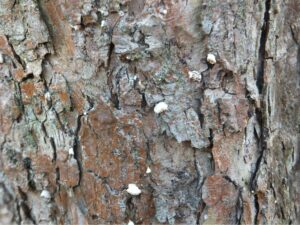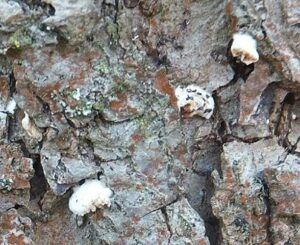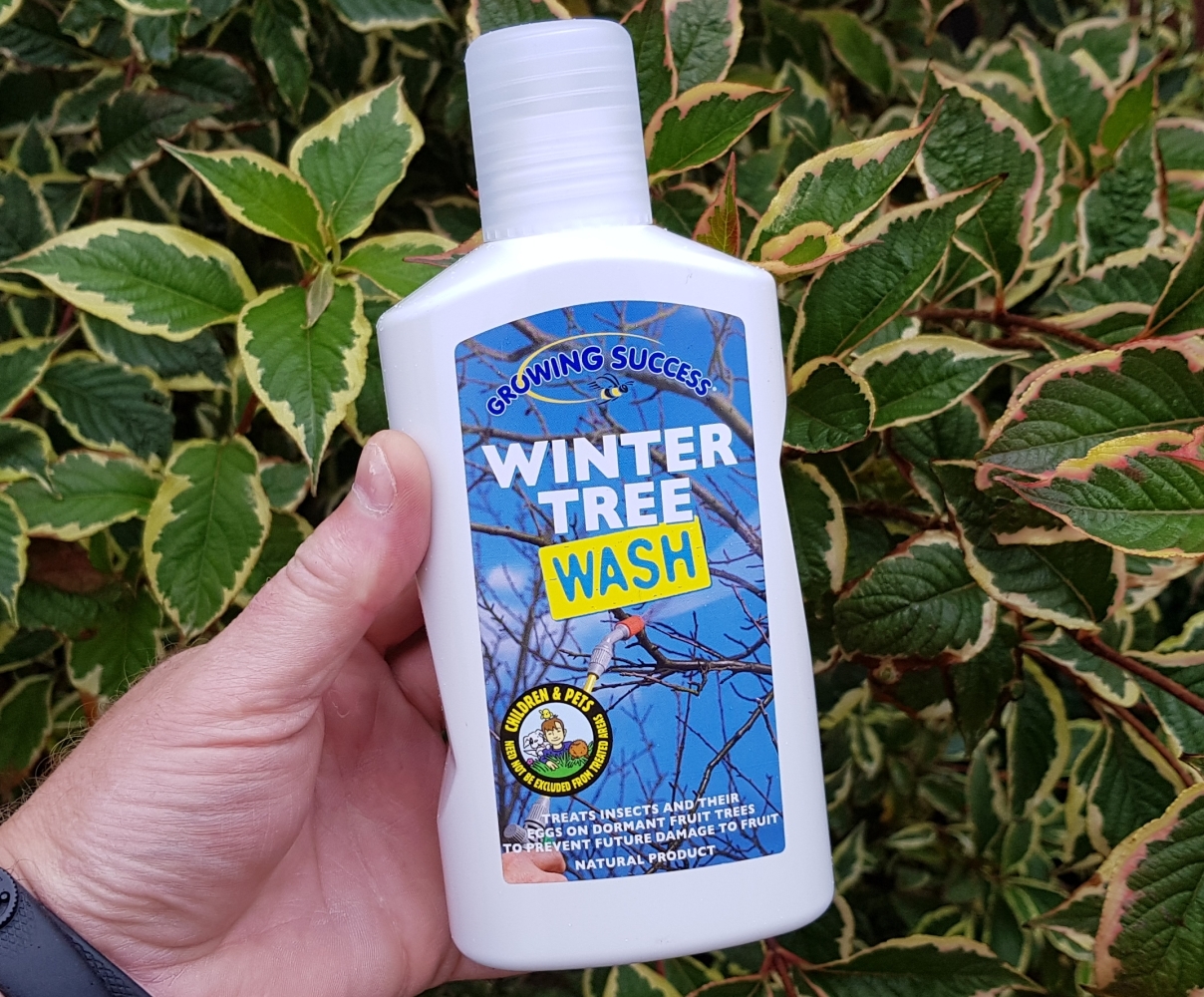28 February 2023
Customer Question – Apple Tree Pest?
Q. “Thanks for chatting to me yesterday about the white ‘bits’ that have been appearing on our apple tree trunk. As I said to you, they are all up the bark, and they look like some sort of strange fungal growths. They are white and fluffy to the touch, not the same sort of feel as a fungus. The only thing that we have done differently this year to other years was that when we used our wood burner we did put some of the ash around the base of the trees, as this was recommended on gardeners question time on the radio, but this was only a small amount of ash. Only one tree has this problem, we have another apple and a pear tree that appear to be clear of it and all the trees fruited well last year (we ended up putting out boxes of apples/pears for our fellow villagers to take free of charge as we had too much fruit for our own consumption). Have attached photos, which I hope will help you to identify what may be wrong, and whether you have a product to help eradicate it. Look forward to hearing from you.” Kind regards Mrs Denise


A. Good to talk to you and I do think this is Woolly Aphids, so at this time of the year Winter Wash is the answer. Woolly aphids flourish between spring & autumn, infesting the trunk and branches of trees, resulting in them being covered with a fluffy white waxy “wool”. Woolly aphids over-winter in cracks in the bark and then as temperatures rise in the spring they become active and start feeding. Woolly Aphids feed by sucking sap from beneath the bark and at the same time they start to secrete their characteristic white, woolly coating. Infestations peak in the summer, when the aphids spread onto the younger shoots and winged forms develop to fly off to spread the infestation around the garden. To control woolly aphids, use Winter Wash now to remove as many of the pests as possible. If necessary you can then use a combination of SB Invigorator natural spray and Lacewing Larvae – Spray 1st with Sb Invigorator natural spray to kill as many aphids as possible – it’s a good idea to brush affected areas with a stiff brush as well if you can reach. You should then release the Lacewing Larvae 7 days later into the tree to give on-going control.

Available to buy now
Winter Tree Wash
One of the best ways of reducing pest numbers in fruit trees is to apply an Organic Winter Tree Wash…
Sb Invigorator Concentrate
Use SB Invigorator to control a wide range of insect pests including aphids, mealy bug, wooly aphids, scale etc naturally PLUS it…
Lacewing Larvae
Lacewing larvae are natural predators of aphids and other soft bodied pests such as whitefly eggs, thrip larvae, scale insect,…
Lacewing Chamber
Position a Lacewing Chamber in your garden in late August to make sure more Lacewings survive the winter. Lacewing larvae…
